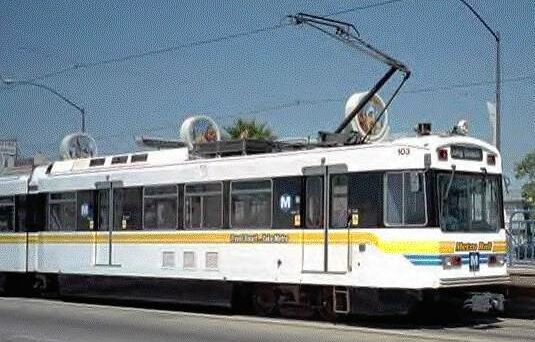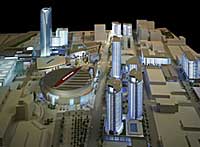Professor Kodama sent an article from the Republic Washington Bureau about the effects of pork barreling in politics, using Arizona as a prime example.
Ariz. last in pork-barrel cash, lawmakers say it's a waste
Key lawmakers say earmark process wastes taxpayer money
Diana Marrero
Republic Washington Bureau
Mar. 22, 2008 12:00 AM
WASHINGTON - Arizona has some powerful lawmakers in Washington, including Republican presidential candidate John McCain.
But when it comes to pork-barrel spending, otherwise known as earmarks, the state isn't very powerful. In fact, it ranks last.
That's mostly because three of the state's 10 lawmakers in Washington, McCain and House Republicans Jeff Flake and John Shadegg, refuse to ask for any federal money for local projects. Another Arizona Republican, Sen. Jon Kyl, strictly limits his earmark requests. They all say the earmark process wastes taxpayer money and desperately needs reform. But other Arizona lawmakers counter that their colleagues' stance hurts the state.
Click Here
Arizona, one of the fastest growing states in the nation, will receive $18.70 per capita in federal earmarks this fiscal year. By comparison, Alaska, with roughly a 10th of Arizona's population, is set to receive $506.34 per capita, the highest in the nation, according to Taxpayers for Common Sense, a watchdog group that tracks earmarks.
Alaska receives about three times as much as Arizona in actual dollars, $346 million to $119 million. That means Arizona gets less money for water projects, bridge repairs, road construction and rural clinics.
"When you have reformers and purists, you end up not getting a reasonable share of money coming out, which hurts the state," said James Thurber, director of the Center for Congressional and Presidential Studies at American University. "When you're holier than thou, you don't get much of the money."
Much of the work done by lawmakers in Washington centers on how to spend about $3 trillion in taxpayer money each year. For many members of Congress, securing money for projects back home can be the most tangible product of the complicated budget process.
But earmarks have gotten a bad name after public corruption scandals involving former high-profile lobbyist Jack Abramoff and former Rep. Randy "Duke" Cunningham, R-Calif., who went to prison for accepting millions in bribes from defense contractors to steer government money their way.
Lawmakers still secured about $18.3 billion for nearly 13,000 projects last year. Only 18 lawmakers declined to seek any earmarks. They often work together on earmarks that can benefit multiple states or districts. But the bulk of their requests is for projects in their home districts or states.
Efforts to place a one-year moratorium on earmarks have failed in both chambers, but a growing number of House Republicans have signed a pledge to abstain from seeking them.
Rep. Trent Franks, R-Glendale, helped secure about $29.2 million worth of earmarks last year but has vowed not to ask for any special-project money this year. Franks' recent pledge would mean that only half of the state's congressional delegation plans to actively seek earmarks.
"We have members of our delegation who feel their job is not to bring equitable resources back to the state," said Rep. Raul Grijalva, D-Tucson. "The fact remains we are shortchanging our taxpayers by not bringing more resources into the state."
Political power counts
Alaska is home to Sen. Ted Stevens, a senior Republican on the Senate Appropriations Committee, which largely controls how money is doled out in Washington. Arizona has just one appropriator in the House, Rep. Ed Pastor, D-Phoenix, where rank-and-file members have less clout than do members in the Senate.
"It's one of the illustrations of what's wrong with the system," said Ryan Alexander, president of the taxpayer group. "Earmark dollars are not distributed based on need or merit or anything else as far as we can tell other than by power."
Shadegg, one of the Arizona lawmakers who rejects earmarks, agrees.
"I would argue that if all of us sought earmarks, Arizona would still get shortchanged," the Phoenix lawmaker said.
That doesn't mean they're shortchanged in the overall federal budget. The state receives more federal funding than state taxpayers put in, according to the Northeast-Midwest Institute, which found that Arizona got $1.19 for every dollar taxpayers spent in 2005.
Others say that earmarks increase government spending at a time when the national debt continues to climb.
"We simply can't afford it in the country," said Flake, of Mesa. "I just can't, in good conscience, just play the game."
Kyl, who helped secure about $92.7 million in earmarks last year, does not think lawmakers should eliminate them altogether. But he argues that the system should be more transparent and that funding be distributed based on the merits of projects.
Earmark disclosure
Recent reforms have forced lawmakers to disclose the earmarks they secure but don't make them identify all their requests. So far, only three Arizona lawmakers, Kyl and freshmen Democratic Reps. Harry Mitchell and Gabrielle Giffords, have vowed to disclose all their requests.
"I'm willing to defend what I ask for because I ask for so little," Kyl said.
Pastor won't release all his requests because he says it would violate the privacy of groups asking for money. But he defends all the projects he supports and notes that earmarks make up 1 percent of the federal budget. If it doesn't get spent on Arizona projects, the funding will be spent elsewhere, he said.
"All the money Arizona doesn't take goes to Alaska," said Pastor, who secured more earmark funding than any other member of the state's delegation: $57.7 million.
Pastor also teamed with Mitchell, D-Tempe, to get nearly $700,000 for a restoration project for the Salt River, which sometimes floods, washing out roads. The project is a big priority for Mesa, which is represented by Mitchell and Flake.
 I stumbled upon this website that contains over a hundred different systems used for transportation around the world.
I stumbled upon this website that contains over a hundred different systems used for transportation around the world. 














